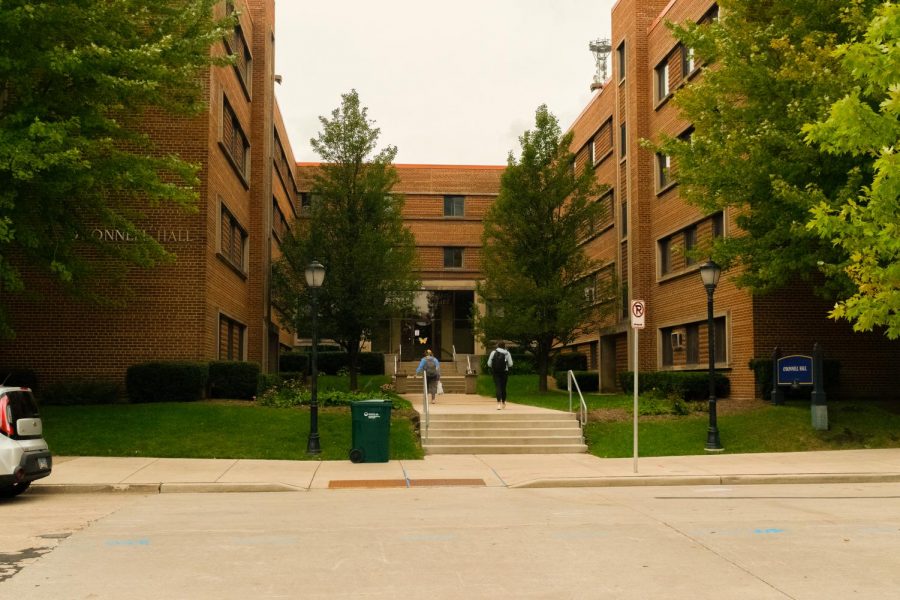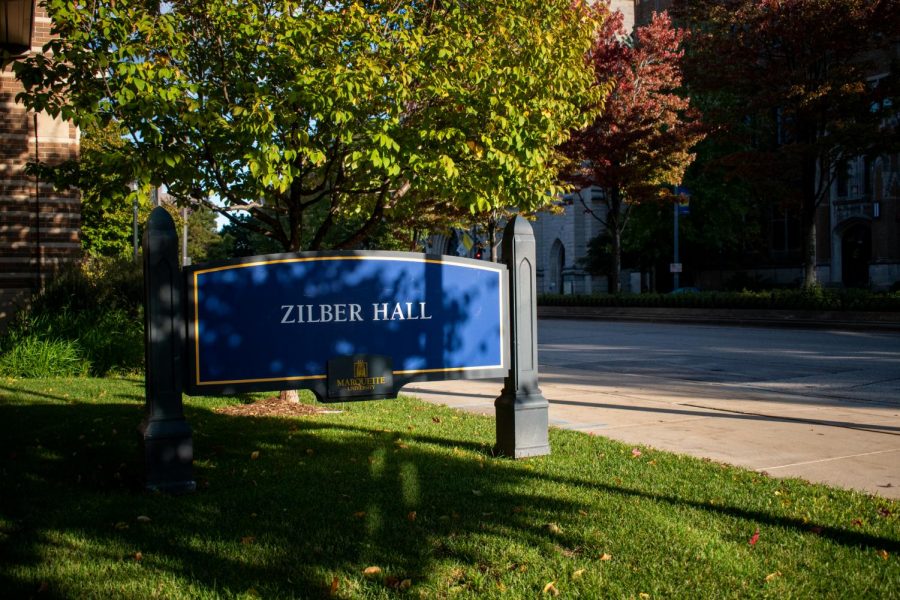On windy days, some residents of O’Donnell Hall keep their windows sealed shut.
The wind carries what some students described as a noxious odor from Callery pear trees near the two entrances of the building. The trees, characterized by their white petals, have caused a stir among residents.
“After a long day of work, you’re walking back into the building, and that’s the smell you get?” O’Donnell resident Michael Guida said. “I think it’s ridiculous. That’s the last thing you want to smell, so I have no idea who decided it would be a good idea to put these up.”
The smell has been described as that of rotting fish by several residents. The Callery pear has a nationwide reputation for its foul odor, with many residents saying they smells like fish.
According to the National Park Service, the trees are native to China and were first brought to the United States in 1909. It was believed that they were fire-resistant. They are an invasive species and can be found all throughout the United States.
Residents are exposed to the smell when they enter the building from the 18th or 19th Street entrances. There is no way to enter the building without encountering the trees.
O’Donnell Hall was constructed in an H-shape, with a connecting bridge between the two rectangular structures. The trees are located directly between the two structures where students stay, exposing several residents to the odor just by opening their windows.
O’Donnell resident Patrick O’Brien said the lower levels of the hall are the most heavily affected.
“You open the window, and it literally smells like a fish yard,” O’Donnell resident Izzy Ogden said. “Thank goodness I have a fan, because I do not want that window open by any means.”
Girls stay on the second floor, which is still not safe from the trees below. Residents on the third floor of O’Donnell have reported similar complaints.
However, not everyone says the smell is unpleasant.
“Me personally, I don’t mind it. I honestly don’t smell anything ,” O’Donnell resident, James Folan said.
Folan lives on the first floor directly next to some of the trees. He said that people are blowing this thing way out of proportion.
“I keep my window open literally all the time,” Folan said.
O’Donnell is not the only place where the trees can be found on campus. Several complaints have been lodged about trees by Cobeen Hall and Cudahy Hall.
The National Park Service has warned against planting Callery pear trees because they take up space native species could have grown in. They are naturally disposed to go with virtually any soil.
University officials have not yet commented about whether the trees were planted intentionally.








